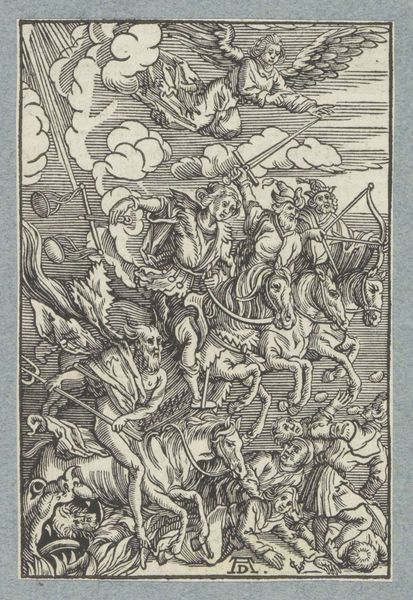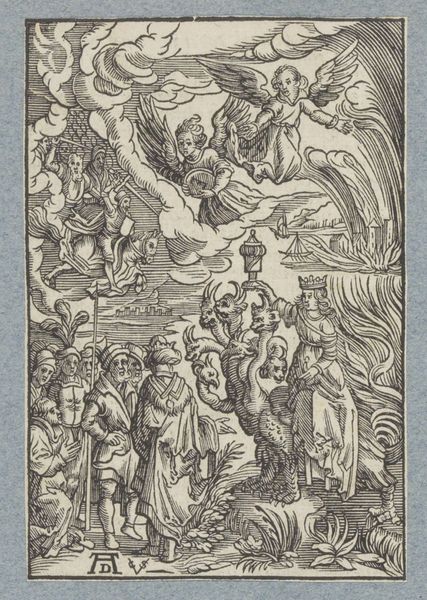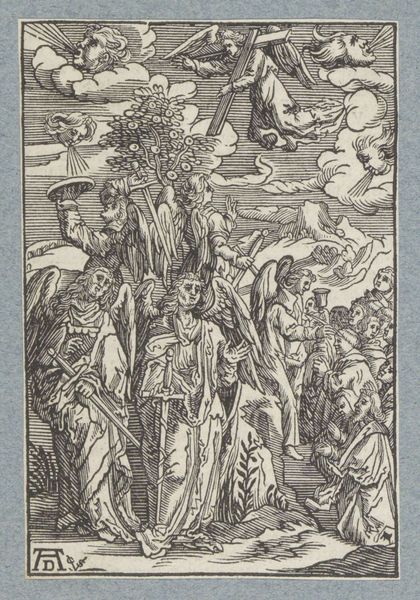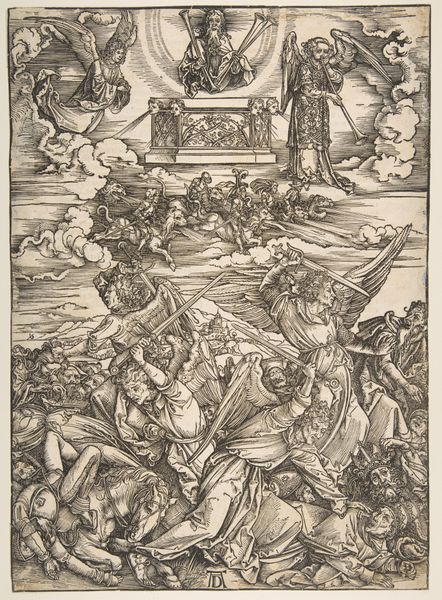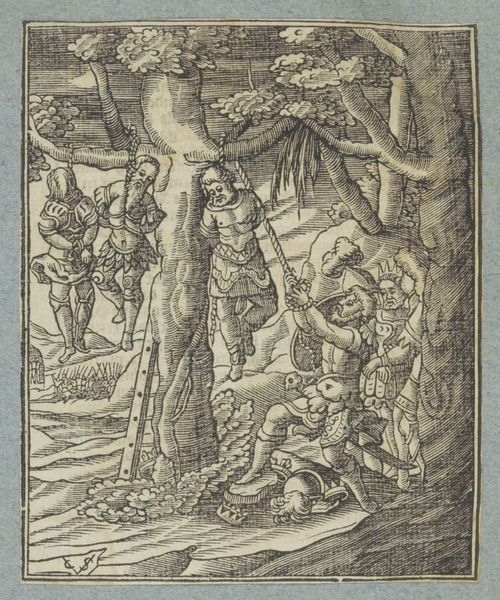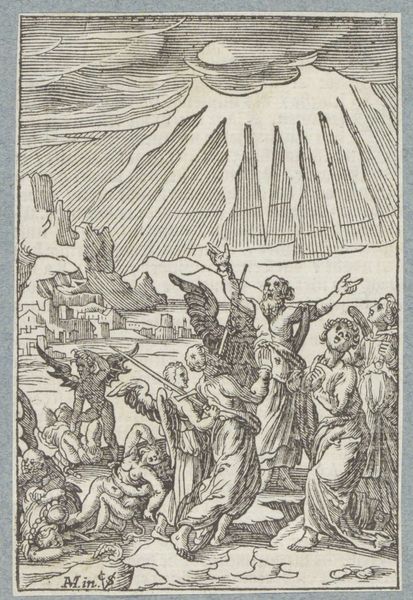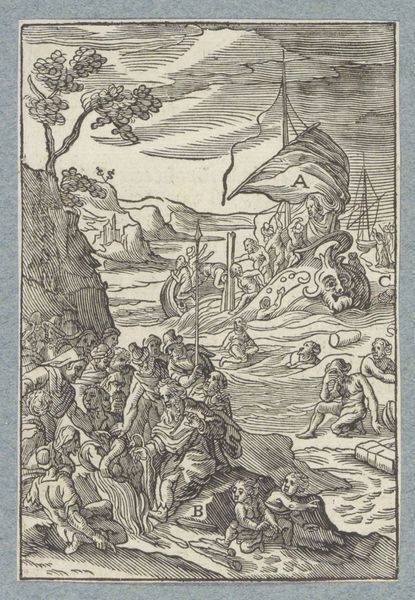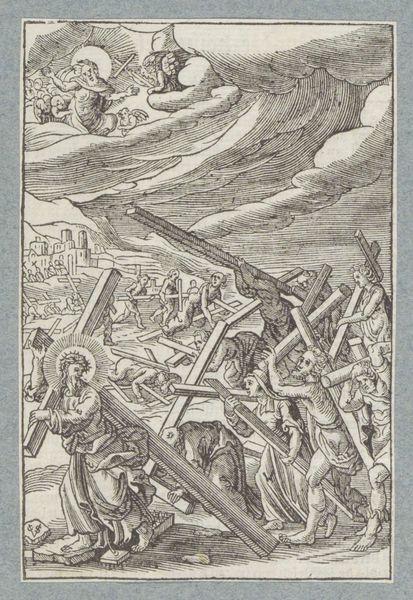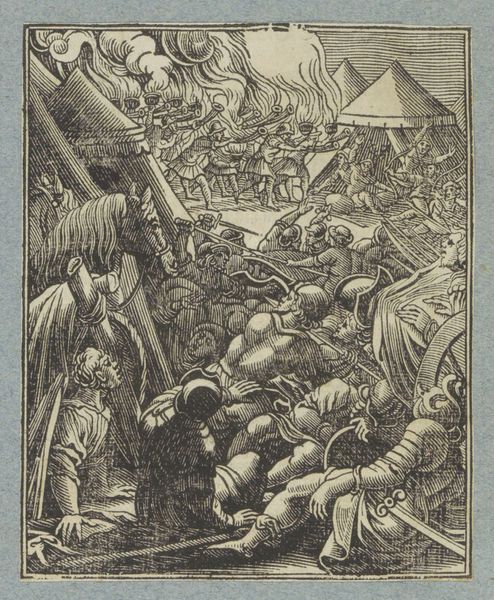
print, engraving
#
medieval
# print
#
figuration
#
line
#
history-painting
#
engraving
Dimensions: height 113 mm, width 76 mm
Copyright: Rijks Museum: Open Domain
Curator: Here we have "Vier Wrekende Engelen," or "Four Vengeful Angels," an engraving created by Christoffel van Sichem the Younger, sometime before 1646. It’s part of the Rijksmuseum's collection. Editor: The immediate impression is one of dynamic chaos, a visual assault. The stark lines of the engraving intensify the violence depicted. There is an oppressive, claustrophobic feeling despite the implied sky. Curator: That intensity is central. Prints like this were instrumental in shaping public perception and religious belief during times of upheaval. Consider the context: this piece emerges during the tail end of the Eighty Years’ War. It's likely such imagery reinforced a vision of divine retribution against the Spanish. Editor: I see the interplay of power, too. God is enthroned above, seemingly aloof from the carnage unleashed below. Are the angels agents of divine will or extensions of human rage translated into a celestial narrative? It makes me question who is truly wielding the sword here. Curator: The artist uses visual cues typical of medieval art and Northern Renaissance traditions. The linear style is less concerned with anatomical accuracy and more with symbolic communication. Note how each figure, whether angel or demon, has distinct characteristics—it's about conveying types more than portraying individuals. The spatial arrangement is flattened to focus our gaze on the central conflict. Editor: And how this flattened perspective contributes to the sense of overwhelming, inescapable violence. The figures press against each other, eliminating any sense of safety or distance for the viewer. It invites a sense of complicity, of bearing witness to an unspeakable act of collective violence. It reflects how history can be a sequence of abuses enacted under varied ideological banners. Curator: By understanding how art shapes, reflects, and occasionally subverts political ideologies, we begin to understand it as part of larger social struggles for equality. Editor: Right. It's never just an aesthetic object, but a complex product and producer of culture, ideology, and power dynamics. Examining these prints offers insight into our present condition, which also includes a struggle against systemic inequity and conflict. Thank you for illuminating that connection.
Comments
No comments
Be the first to comment and join the conversation on the ultimate creative platform.
